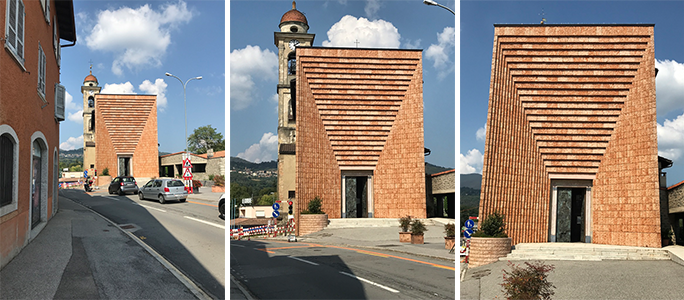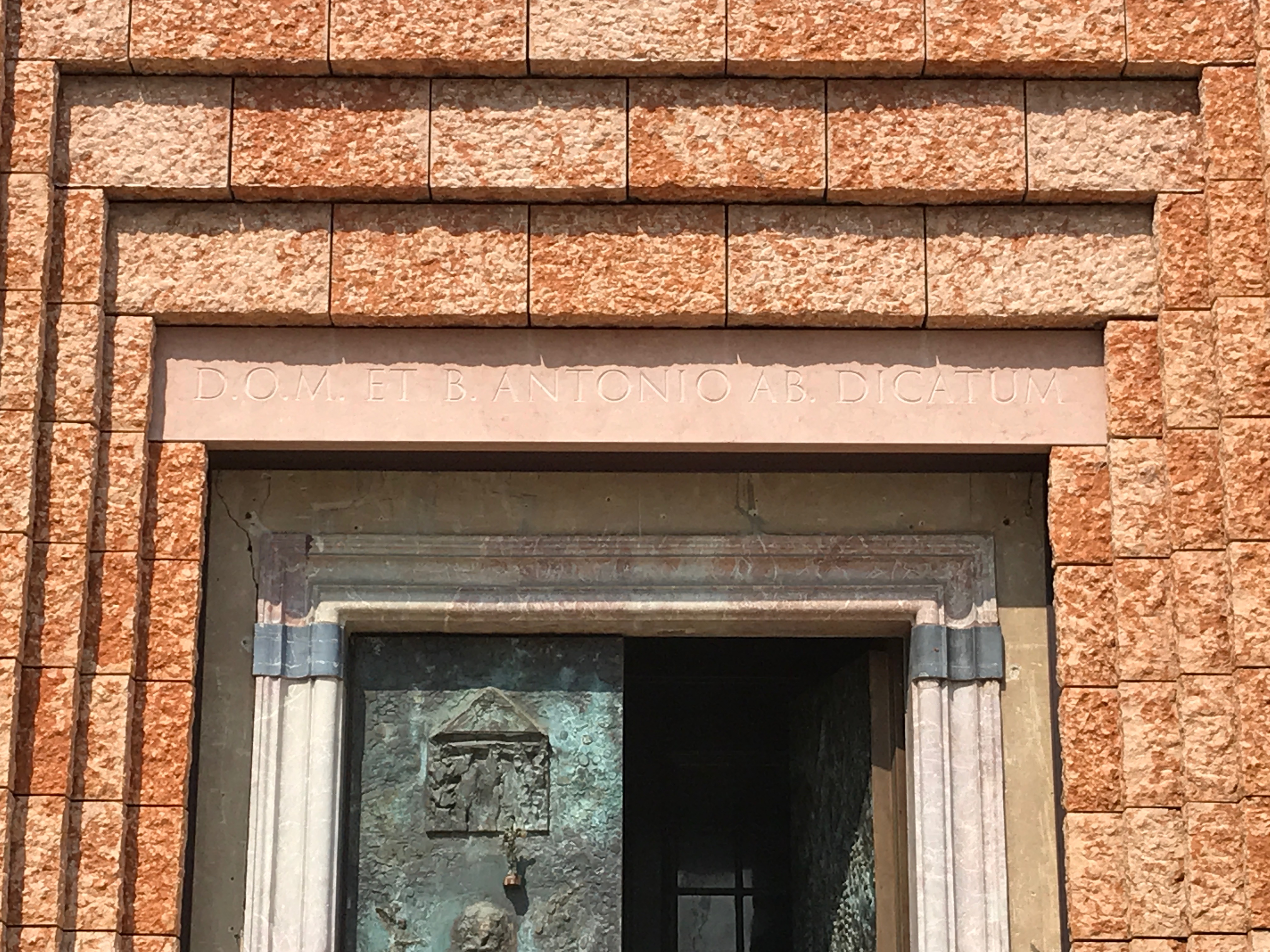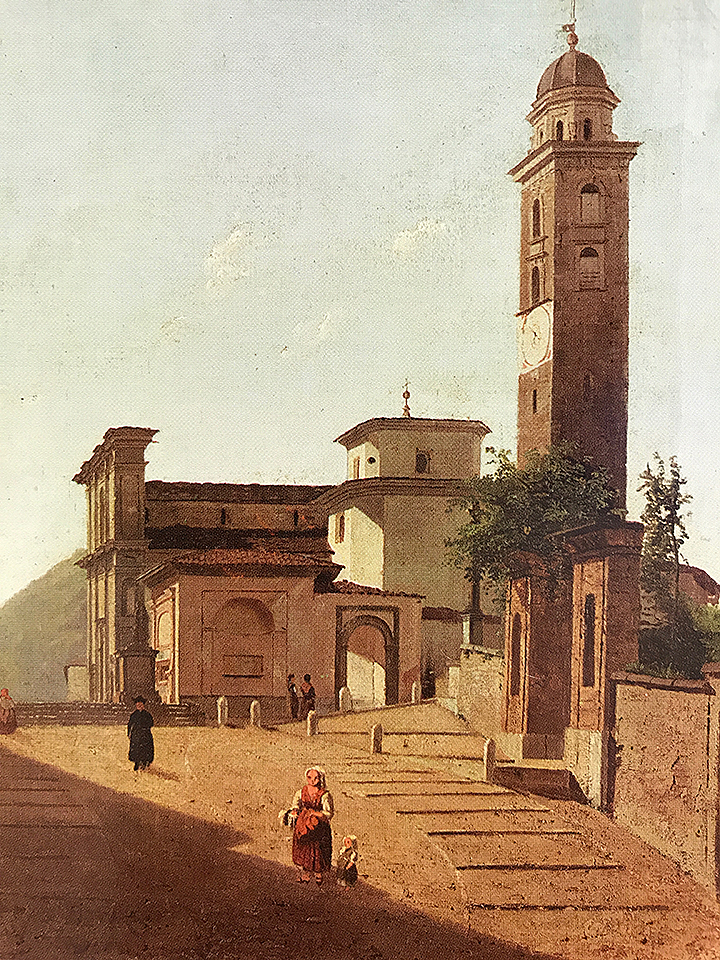In part 1, I explored the work of Tita Carloni. Now I would like to study the church façade of Sant’Antonio Abate (1999-2003) designed by internationally recognized architect Mario Botta, a disciple of Tita Carloni.
Situated in the small town of Genestrerio, a small municipality of Mendrisio, minutes away from the Italian border, the particularity of this project is that the architect is working next to one of his own projects, namely the adjacent parish house completed in 1963, his first commission at the young age of twenty.
Mario Botta
Botta’s church façade reminds me of the Rovio façade in its austere presence, but offers a different interpretation of what a contemporary church façade may look like. The stark vertical and slender façade commands the small public plaza in front of the church. What distinguishes this design from Carloni’s, is the quasi absence of any decorative elements and overt references to the history and theory of architecture. Here, the art of building is forcefully manifested. Ornamentation, as an art of embellishment, is achieved solely through the logic of construction techniques.

- The vertical laying of the rusticated stones to express their non-structural role (emphasized by the horizontal gaps in the laying of the stone)
- A regular offsetting to create shadow and depth as the stone recede towards the entrance door, both horizontally and vertically, and above all,
- The resulting geometrical illusion created through a façade that fans out from the historic entrance door.

There is a magnificent sense of verticality given to Botta’s facade, suggesting metaphorical hands lifting to the heavens; to the divine. Like “prayers in stone,” Botta’s talent has always been about creating a unique presence and great suggestive power for his buildings. In this instance he excelled with a modest intervention.In these two examples of Carloni and Botta, I remain struck by the strong two-dimensional tectonics of both façades, and this despite the illusions of depth in each of them.
Perhaps the architects wanted to reflect on the nature of a façade; a thin skin that is like clothing that celebrates the point of entry into the sacred space. And yet, what is so comforting for me, is that while both interventions remain indebted to their time, they reflect an historical lineage, one that can be traced back to Alberti and Palladio, or perhaps less academically, to the simpler vernacular and indigenous church facades that mark the Ticino region.
Article by Jonathan Glancey regarding Botta’s exhibition “Architetture del Sacro: Prayers in Stone” exhibition on church architecture of Mario Botta at the Royal Institute of British Architects (RIBA), London, Great Britain, Nov. 2005 – January 2006.
Additional images of the Genestrerio Church
Additional blog of interest
Church facade in Ticino, Switzerland: Part 1
The Igualada Cemetery
Church Architecture of Arantzazu, Basque region
National Memorial for Peace and Justice in Montgomery, Alabama



